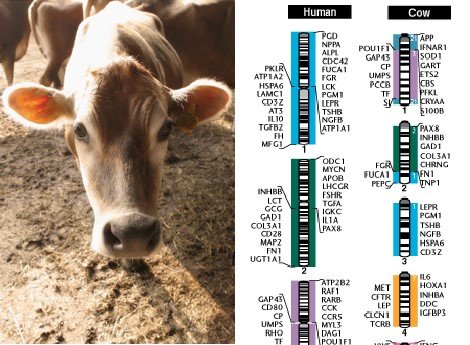Genetic diseases are characterized as those diseases which occur due to genomic abnormalities. These disorders are usually present from birth called congenital diseases.
Genetic disorders are very rare and their occurrence ratio is one to several thousands. These diseases can be hereditary or acquired and mainly occur due to changes in DNA sequences (mutation) of genes in individuals.
Hereditary disorders are usually transferred from parents to their offspring through germplasms but in acquired diseases, mutations due to any factor usually occur after birth and can be passed to their children if these changes occur in germ line. Due to changes in genetic makeup, individuals become susceptible to many diseases.
In biomedical research, these diseases are extensively studied and their potential test therapies are under process in animal species to cure genetic diseases in humans. A wide range of animal genomes are sequenced and try to find genomic similarity between humans and animals for several genetic diseases.
Several animal genomes upon sequencing reveal that their genomes hold such genes which can be used to cure human disorders. Various animal models can be used to study and find solution for human genetic diseases.
Horses suffer from many genetic disorders < 90 like muscular diseases, infertility and inflammatory conditions. Horses genomes contain keratin genes more than pig and humans and this gene is important for hoof formation. In humans, mutation in keratin genes lead to a condition called pachyonychia is characterized by thick and abnormal development of nail which produce blisters on feet and hands.
Horses also hold more opsin genes which help them for sharp eyesight. “Leopard complex” is characterized as Appaloosa with coarse effected coat and produces night blindness in humans and finding such coat color mutating gene can cure night blindness.
Pigs are important to study the human health and diseases because they share similar physiology but different organs and body size. These characteristics provide opportunities to explore drug tests and different lifestyle disease genes like obesity and cardiovascular abnormalities.
Pigs are reservoir of H1N1 (influenza virus) for both humans and avian birds but this virus do not effect pigs to develop swine flu. Pigs can also act as vital source of organs and cells for human transplantations like beta cells of islets and kidney cells.
Cattles act as a source of protein through milk and meat. Cattles harbor large number of genes compared to humans for innate immunity to protect themselves from huge load and variety of microorganisms which are present in rumen. These genes are known as immune genes and can be used to reveal that how humans can develop such identical relationship with their microbes.
Cattles also have docile temperament and such docile regions in cattle chromosomes can be linked with human genomes for metal abnormalities and development of brain.
Cats are important domestic animals and suffer from < 200 genetically inherited diseases which are similar to human diseases. Cats are susceptible to a degenerative disease of retina called retinitis pigmentosa and lead to blindness same as humans.
Cats also act as study models for several leukemias like feline immunodeficiency virus, a relative of HIV (model for AIDS), feline coronavirus (model for SARS) and feline leukemia and sarcoma viruses (model for various sarcoma and leukemia diseases).
Dogs are being domesticated for < 100,000 years ago and also susceptible for many genetic diseases like epilepsy, cancer, deafness, hip dysplasia, cancer, heart diseases and blindness. It is important to note that < 400 diseases in dogs are similar to humans.
Due to high prevalence of large number of similar diseases, genomic studies in dogs are more important. Dogs genomes are also being used extensively for assessment of pharmaceutical safety and gene therapies in experimental studies.

Conclusion:
Animals serve human beings by different ways including provision of food like milk, meat and eggs, domestication and companionship. Due to advancement in medical science and biomedical research, these animals can be used to provide more benefits like production of specific enzymes, proteins and therapeutic products through genetic engineering etc. Mutations produce changes in genes and lead to disease development.
These defective genes can be replaced with normal genes from healthy individuals. There are large number of genetic diseases which are similar in humans and animals. Animal genomes contain large number of identical regions with human genomes and these regions can be explored for therapeutic purposes.
In recent times, more detailed studies and extensive researches in the fields of biotechnology, genetic engineering, pharmaceutical and veterinary sciences are needed to explore more beneficiary effects from animals for human beings.
Zain Ul Abadeen
Department of Pathology, Faculty of Veterinary Science, University of Agriculture, Faisalabad, Pakistan.